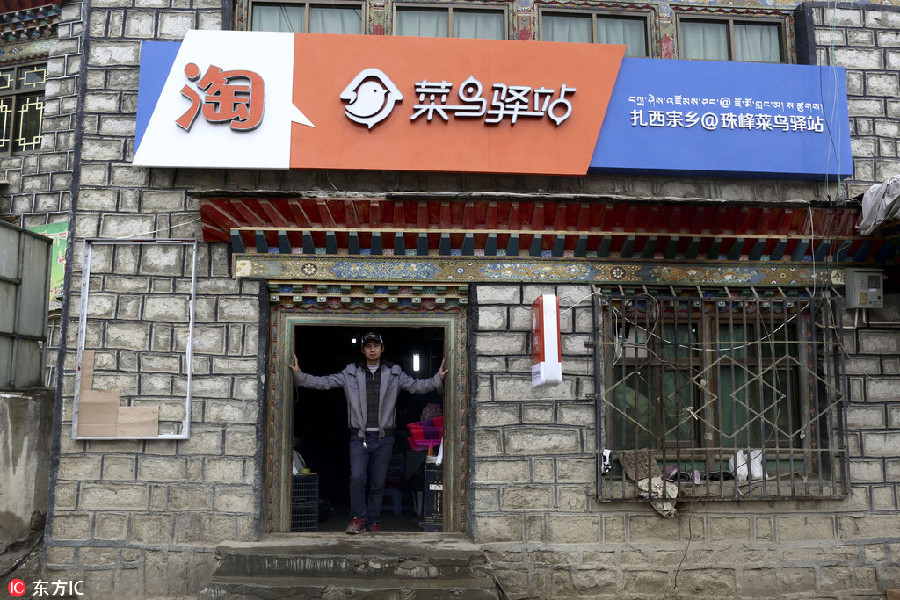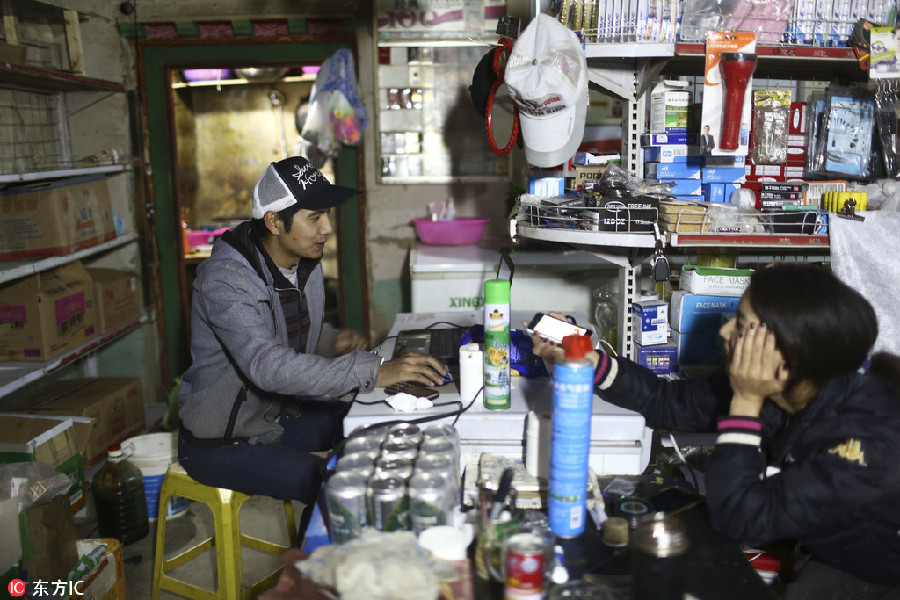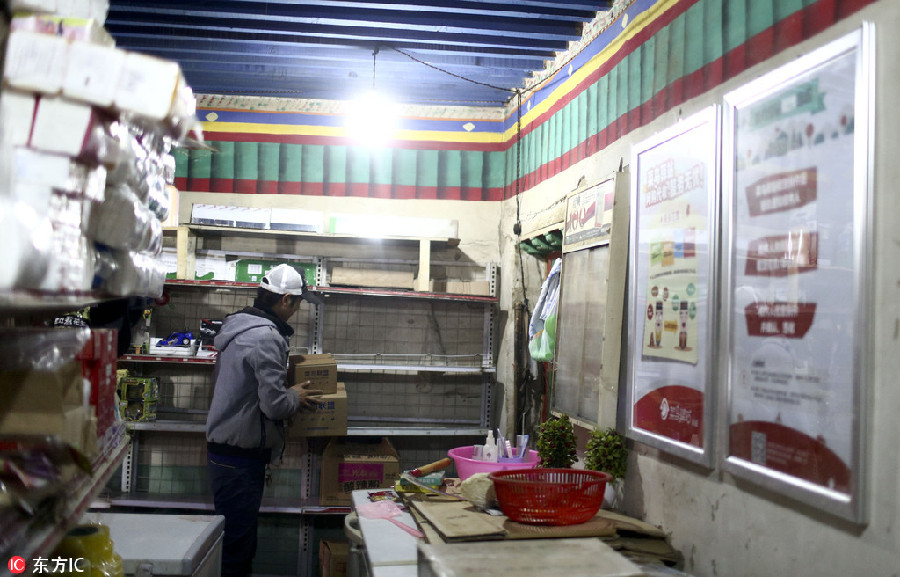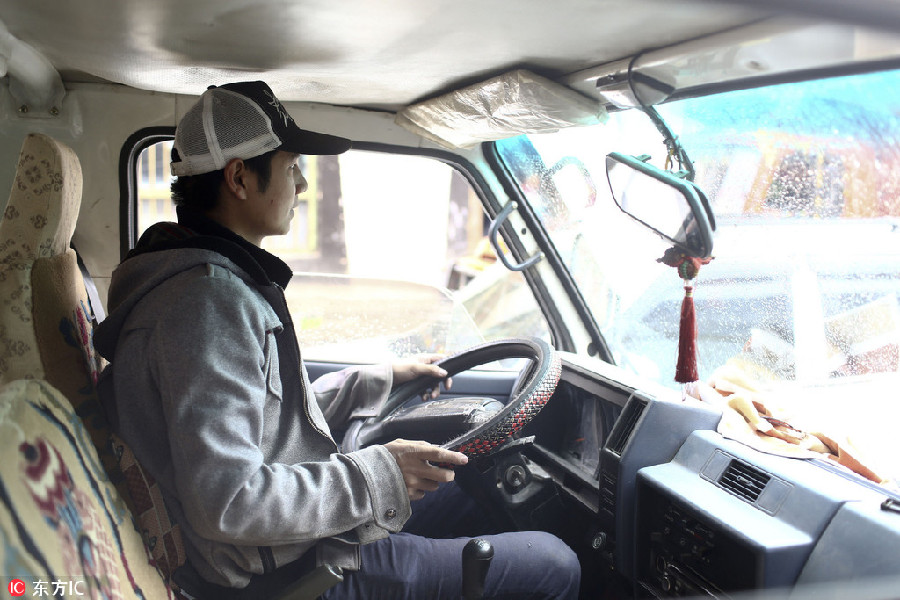This is very good news for the folks in the rural and remote areas.
Turning a disadvantage into an advantage!
It's more than just building folk hotels and preserving the pristine environment.
Also needed is a tourist friendly culture, a safe tourist environment.
Very important is the infrastructure (transportation, utilities, sewage facilities, etc).
All these and more to support the tourism in rural areas.
-------------
Reinventing a rural lifestyle
2016-09-15 11:48 | China Daily
Editor: Xu Shanshan
The view of Xianrendong from a local inn. (Photos by Yang Feiyue / China Daily)
Xianrendong village, which drew 3 million visitors last year, once faced a shortage of food.
Twenty years ago, Xianrendong was a village which was short of food. There were basically no industries, including tourism. Local villages mostly could only rely on meager incomes from growing crops on their own small patch of land.
But now, as we took a boat to the village early August, we could see yellow-brick houses of two or three stories at the foot of green mountains as we traveled along a shimmering river to get there.
Besides, lush grass laid siege to the houses.
The villagers wore big smiles and gave us a warm welcome as we stepped ashore.
The village, which sits in Qiubei county in the Wenshan prefecture of southwestern China's Yunnan province, is home to 196 households and comprises the Sani people belonging to the Yi ethnic group.
"Most of us earned only 300 yuan ($45.1) each in 1993," says Fan Chengyuan, a local villager.
"But now our annual income can be as much as 30,000 yuan."
Fan was one of the first in the village to escape the poverty trap.
The 36-year-old worked as a tuner at a hotel in Qiubei for six years from the age of 19, and during this period he studied catering and hotel services.
He opened a restaurant in his village after he left the hotel becoming one of the few locals who had their own business.
Later, in 2005, as he sensed that local tourism was set to grow, he built farmhouses with his 1-million-yuan savings.
His bet paid off as the number of visitors began to surge in the following years.
Soon, there weren't enough rooms.
But problems followed too.
Soon, everything descended into chaos.
There was no proper sewage system in place.
And, many villagers blindly took down their houses and tried to build tall modern-looking buildings, which were not consistent with the surrounding scenery.
Fan was elected head of the village in 2012 and tried to make things right.
He guided the locals to build folk hotels.
Soon, private folk hotels sprung up across the village, and became a well-known tourism attraction in the county.
"High-rise buildings shouldn't have been built in a village, where only folk dwellings fit" says Fan.
Fan's own hotel Chachaya covers an area of 700 square meters and offers 11 rooms.
Business has been brisk and Fan's bank mortgage of 2.6-million-yuan has basically been paid up.
Now, the village is showing signs of prosperity.
There is no foul smell of sewage, and parking lots have been built.
On a typical morning, villagers wake up early and prepare breakfast for their guests.
The morning market is something one should not miss.
It was filled with people, and local specialties and fresh vegetables are displayed for sale.
The crowds begin to thin out at around 11.
Meanwhile, the Puzhehei scenic spot where Xianrendong is located now attracts a lot of attention.
It came into prominence after it was featured in the hit reality show Dad, Where Are We Going? in 2013.
Liu Zhao from Chengdu the capital of Sichuan province, says: "It's a great place for a family trip, and has made my visit worthwhile."
Liu brought his wife and six-year-old daughter to the area for the summer vacation.
He got to know of the place through the reality show.
The area is very family friendly
While children can play at a playground at the end of the village, adults can hang out at local inn, savoring red wine, or cycle along the river and admire the pristine natural environment featuring karst landform, willow trees and a profusion of lotus.
Some visitors splash water on each other, while others join dances initiated by locals.
The increasing fame of the area is now also drawing visitors from abroad, who come mostly to savor the natural beauty, a tour guide says.
Tim Roger from the UK says: "Everything is beautiful here, and I like the scenery and the people."
The area received 1.4 million visitors in the first six months of this year, generating 810 million yuan in income.
In 2015, 3 million visitors came, contributing 1.7 billion yuan in income.
Tourism has undoubtedly greatly benefited Xianrendong.
As Fan says: "
Earlier most of villagers relied on agriculture for a living, but now the farmhouse business is doing well and many young people have returned home to start businesses.
One of them is Fan Haixiang, 23, who has returned from Shanghai, and is currently managing her family inn.
The inn is filled almost on a daily basis, she says, adding that daily income can sometimes hit 10,000 yuan.
But she is not an exception and many like her are flocking back and devoting themselves to the local tourism business.
Earlier, girls from the village used to typically get married at 20, but now many are delaying getting hitched as they are very busy with work.
Looking at the future, Fan hopes that the villagers will return to a traditional way of life and visitors will come and envy their unique lifestyle.












